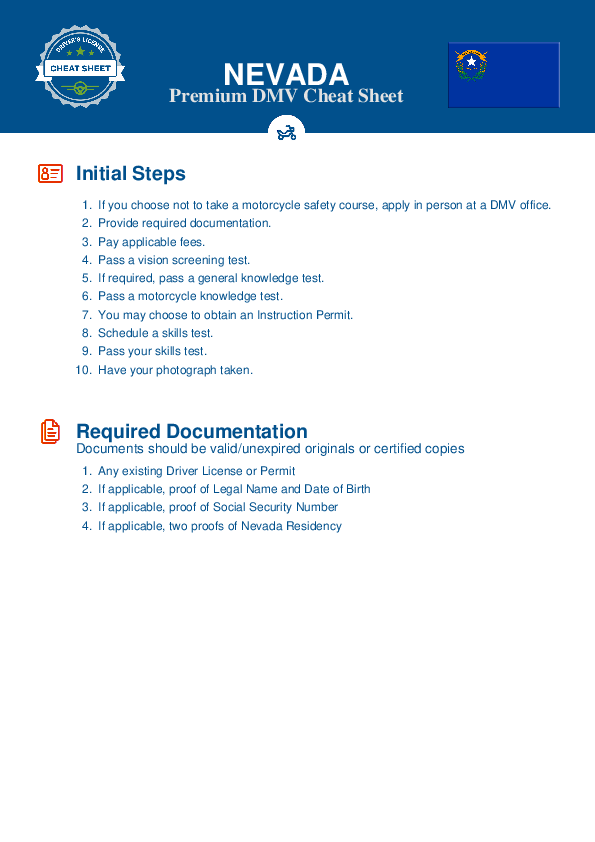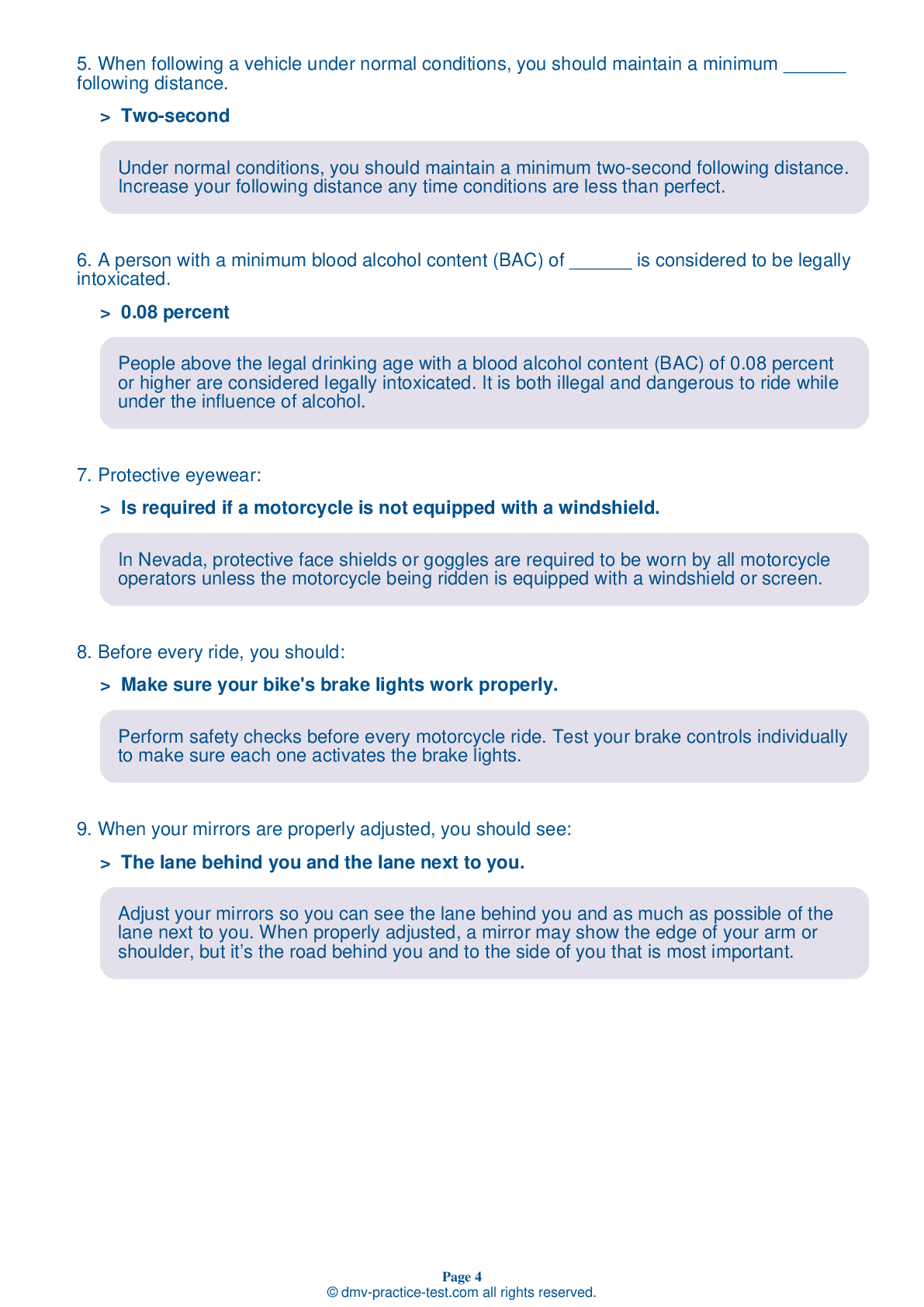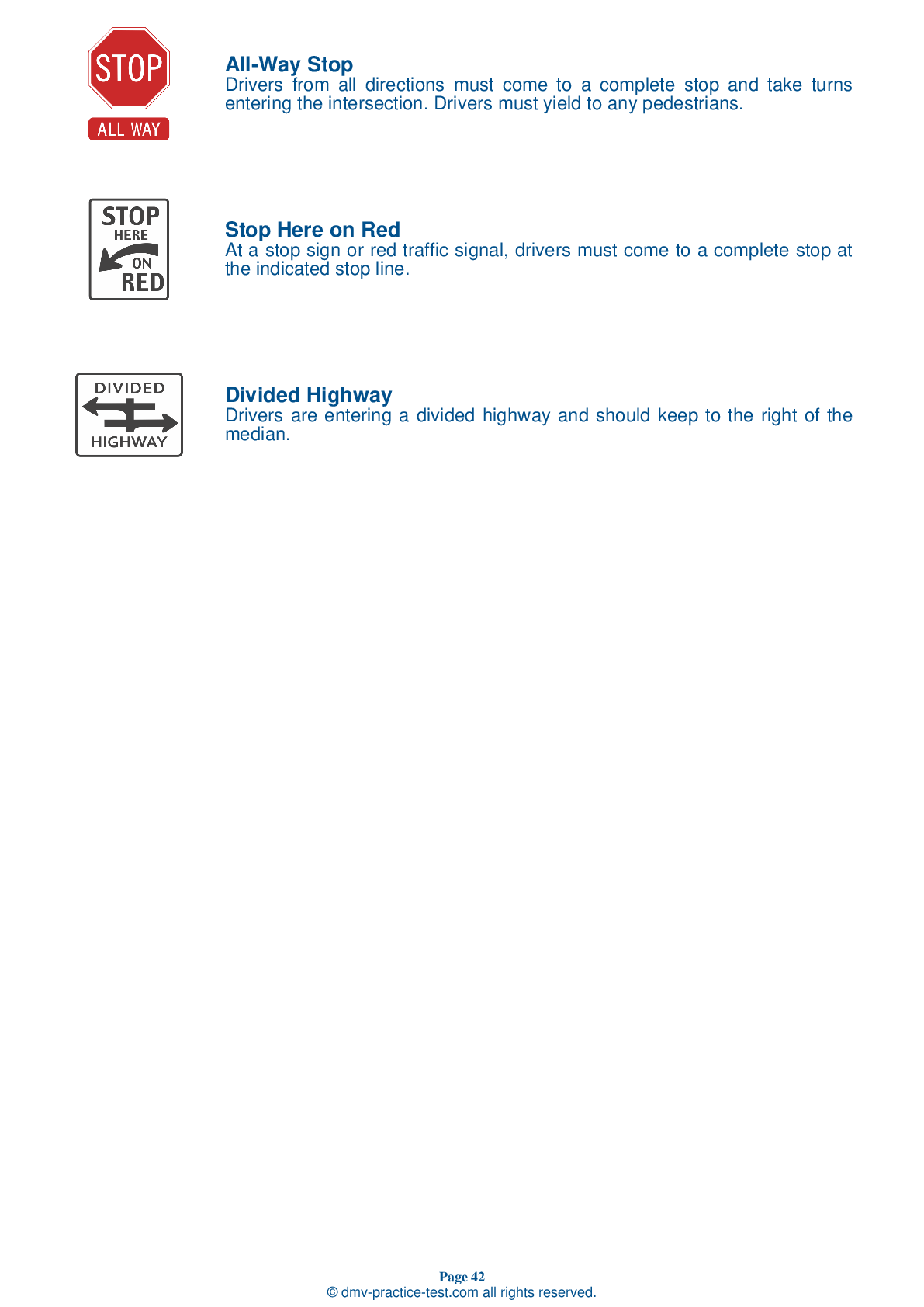Motorcycle Test | License NV 2025 | FREE Online Practice! #15 Page 4 of 4
Take this FREE motorcycle test (license in NV 2025) to check your knowledge of the road rules. To improve your results, download a motorcycle handbook online, study theory, and practice for free on our website. Still worried about how to get a motorcycle license in Nevada in 2025? Check our website for more sample tests, train as much as possible, and boost your grades!
19 . As you accelerate, you should:
As your motorcycle increases speed, you will need to shift up into higher gears. Shift up well before the engine RPM reaches its maximum recommended speed. As a general rule, shift up soon enough to avoid over-revving the engine, but not so soon that you will cause the engine to lug.
20 . You will ______ hear a tire going flat.
Motorcyclists will seldom hear their tire go flat. Tire failure is more commonly indicated by a sudden change in handling.
21 . If your drive chain breaks, you:
If your chain breaks while you are riding, you will notice an instant loss of power to the rear wheel. Close the throttle and brake to a stop.
22 . When being passed by another vehicle, motorcyclists should be alert to:
When being passed, motorcyclists should be careful not to be hit by any part of the passing vehicle, including its mirrors. In addition to the vehicle itself, motorcyclists should also be aware of wind gusts coming from the passing vehicle and potential objects being thrown by a passenger in the vehicle who may not be paying attention to the road.
23 . An engine will seize due to:
Engines seize when they are low on oil. Without oil, the engine’s moving parts cannot move smoothly against each other and the engine overheats.
24 . Many over-the-counter drugs:
Like alcohol, many other drugs (including prescription medications, over-the-counter medications, and illegal drugs) have side effects that may impair your ability to ride safely.
25 . You should check your tires for all of the following, except:
When doing a pre-ride inspection of your motorcycle, you should check the air pressure, general wear, and tread of your tires.
See the exact questions that will be on the 2025 Nevada DMV exam.
99.2% of people who use the cheat sheet pass the FIRST TIME
Jeneen was tired of paying $5/gallon. She got herself a scooter that required the motorcycle license. She studyed the motorcycle test cheat sheet and passed her test the next day!
Christopher tells us how he knew nothing prior to obtaining the motorcycle study guide, and he only got one question wrong because he clicked on the wrong answer by mistake.



